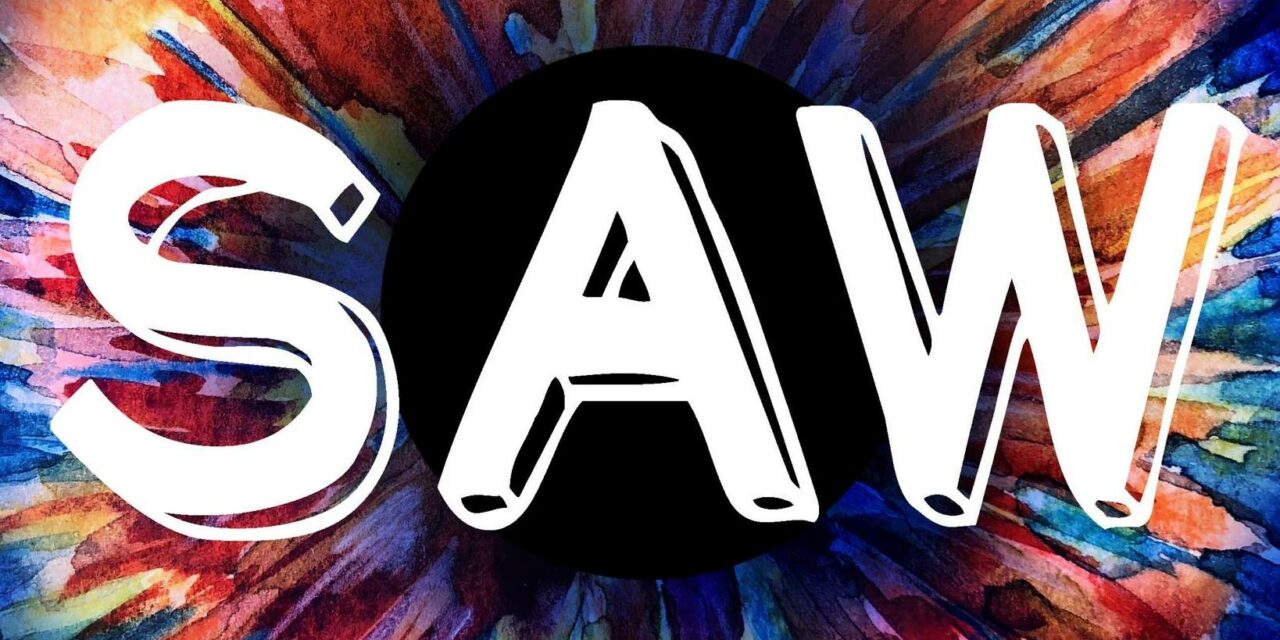
Courtesy of Science.Art.Wonder
Growing up, I had trouble understanding scientific concepts because explanations lacked a visual component. However, painting and animation helped me comprehend subjects like microorganisms and molecular reactions. Art can be a powerful medium to communicate the intricate details embedded in research, but people often fail to comprehend how science and art can complement each other.
Science.Art.Wonder (S.A.W) is an Atlanta-based organization that pairs student artists and researchers from Emory University and Georgia Institute of Technology to present research projects through visual mediums. Student artists engage in semester-long collaborations with fellow researchers, and S.A.W. presents their work in a gallery at the end of each semester. The program hosted its latest exhibition at the Emory Student Center on April 18, where student artists guided viewers through their art and research.
Cassandra Askins (26C), a political science and art history major, explored the symbiotic relationship between different species of bacteria and squash bugs. Her painting depicts two bugs, one in a garden setting and another in a laboratory, and the different bacterium within them. Yellow and purple colors distinguish the bugs, and their inner compositions contain different sized microorganisms.
“Making science more accessible through art is very interesting because it allows for niche topics like squash bug digestive systems to be broadly known by the public, which wouldn’t happen any other way,” Askins said.
Custer Liu (26C), a neuroscience and behavioral biology major with a passion for making art, worked on a project with Timothy Sampson, an assistant professor in the department of cell biology at the Emory School of Medicine. Liu’s digital art piece portrays the struggles of a scientist in their laboratory as they work their way through formulating papers and findings. This piece is a take on research from Liu’s perspective. She shows a scientist looking at their desk, isolated in the laboratory with their life’s work in the background.
“I continue my discussion to all the [principal investigators] I know, they are all excited about to visualize their research because especially their research is their life, and to visualize as a presenter, is from a new perspective,” Liu said.
Liu explained why art and science complimenting each other is important.
“Visual art combined with research is a way to attract people and get people into the field to see another perspective of research,” Liu said. “It’s not only just boring and staying in the lab. It’s also super interesting, super amazing and impressive.”
Manvi Jain (26C), a psychology major with a lifelong practice of painting, collaborated with an Emory scientist exploring mRNAs, a single stranded molecule facilitating protein synthesis. Specifically, she looked into how translation could be a possible therapeutic target for ribosome rescue pathways. Jain’s painting shows how mRNAs lose the impairment and translation if they do not have access to the bacterial rescue pathways, and her use of a plethora of colors, from yellow to purple, one for each stage of mRNA decay, depicts this distinction.
Reflecting on her interaction with the researchers, Jain said she especially appreciates the time the researchers spent to ensure her “representation of their research is scientifically accurate.”
“Even for the more abstract concepts, they were very helpful in picking out details, even things like color schemes that actually accurately represent what maybe some types of ribosomes or molecules look like when you look at them through a microscope,” Jain said.
Jain believes that S.A.W is breaking barriers in scientific communication.
“It’s really nice that we’ve been able to explore more abstract concepts as well, and not something that’s most necessarily stereotypically associated with maybe a diagram,” Jain said.
The combination of science and art is an increasingly important approach to education. As the organization continues to provide new opportunities to students, they enable the wider audience at Emory and Georgia Tech to visually grasp the intricate functions of molecules and biomachines. However, research is not limited to the hard sciences. S.A.W looks to include other disciplines such as political science in their future art displays. With the program enabling students to broaden their artistic minds to scientific fields, S.A.W promotes such interdisciplinary works through their activities.
Yashonandan Kakrania (he/him, 26B) is from Kolkata, India. He is pursuing a dual degree in BBA and MSBA. He is a huge film enthusiast. Outside the Wheel, he is a SA in Dobbs Hall, Board member of Hindu Student Association, and a part of different business clubs.







